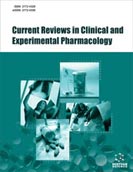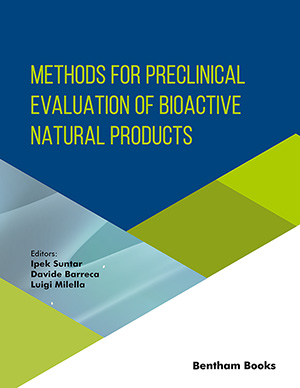Abstract
Fungal infections are emerging as major health challenges in recent years. The development of resistance against existing antifungal agents needs urgent attention and action. The limited classes of antifungal drugs available, their tendency to cause adverse effects, lack of effectiveness, etc., are the major limitations of current therapy. Thus, there is a pressing demand for new antifungal drug classes to cope with the present circumstances. Glucose is the key source of energy for all organisms, including fungi. Glucose plays a crucial role as a source of carbon and energy for processes like virulence, growth, invasion, biofilm formation, and resistance development. The glucose transport and sensing mechanisms are well developed in these organisms as an important strategy to sustain survival. Modulating these transport or sensor mechanisms may serve as an important strategy to inhibit fungal growth. Moreover, the structural difference between human and fungal glucose transporters makes them more appealing as drug targets. Limited literature is available for fungal glucose entry mechanisms. This review provides a comprehensive account of sugar transport mechanisms in common fungal pathogens.
Keywords: Hexose transporters, antifungal resistance, novel antifungals, novel drug targets, Hxt, Hgt, Rgt2.
[http://dx.doi.org/10.1038/s41579-022-00720-1] [PMID: 35352028]
[http://dx.doi.org/10.1016/j.micres.2021.126725] [PMID: 33676311]
[http://dx.doi.org/10.1073/pnas.0305901101] [PMID: 14755054]
[http://dx.doi.org/10.1073/pnas.93.22.12428] [PMID: 8901598]
[http://dx.doi.org/10.1093/femsyr/fov068] [PMID: 26205245]
[http://dx.doi.org/10.1016/j.molcel.2004.10.004] [PMID: 15494315]
[http://dx.doi.org/10.1007/s00294-013-0388-8] [PMID: 23455612]
[http://dx.doi.org/10.1128/MMBR.63.3.554-569.1999] [PMID: 10477308]
[http://dx.doi.org/10.1128/MCB.17.9.5453] [PMID: 9271421]
[http://dx.doi.org/10.1038/srep23502] [PMID: 26996892]
[http://dx.doi.org/10.3390/microorganisms10061208] [PMID: 35744725]
[http://dx.doi.org/10.1111/myc.12330] [PMID: 26033251]
[http://dx.doi.org/10.1093/infdis/jix131] [PMID: 28911043]
[http://dx.doi.org/10.1007/s00239-002-2330-4] [PMID: 12187386]
[http://dx.doi.org/10.1016/j.cub.2009.01.056] [PMID: 19249212]
[http://dx.doi.org/10.1016/S0005-2728(02)00308-0] [PMID: 12351220]
[http://dx.doi.org/10.1128/EC.00186-06] [PMID: 17030998]
[http://dx.doi.org/10.1111/j.1574-695X.2007.00274.x] [PMID: 17573928]
[http://dx.doi.org/10.3389/fmicb.2019.00099] [PMID: 30761119]
[http://dx.doi.org/10.1080/02681218680000181] [PMID: 3522839]
[http://dx.doi.org/10.1093/jac/49.suppl_1.69] [PMID: 11801585]
[http://dx.doi.org/10.3389/fmicb.2020.00296] [PMID: 32256459]
[http://dx.doi.org/10.1128/EC.00138-09] [PMID: 19617394]
[http://dx.doi.org/10.1111/j.1574-6968.2000.tb08866.x] [PMID: 10612724]
[http://dx.doi.org/10.1091/mbc.e04-09-0780] [PMID: 15673611]
[http://dx.doi.org/10.1042/BST0330291] [PMID: 15667329]
[http://dx.doi.org/10.1111/mmi.13933] [PMID: 29453849]
[http://dx.doi.org/10.1038/nmicrobiol.2016.238] [PMID: 27941860]
[http://dx.doi.org/10.1128/IAI.01497-07] [PMID: 18268028]
[http://dx.doi.org/10.3109/13693780802713349] [PMID: 19888799]
[http://dx.doi.org/10.15761/CMID.1000145]
[http://dx.doi.org/10.1016/j.meegid.2015.09.004] [PMID: 26358577]
[http://dx.doi.org/10.3389/fmicb.2015.01334] [PMID: 26648919]
[http://dx.doi.org/10.3389/fmicb.2018.01045] [PMID: 29867914]
[http://dx.doi.org/10.1042/bj20030624] [PMID: 14717659]
[http://dx.doi.org/10.1186/s13068-015-0317-9] [PMID: 26388937]
[http://dx.doi.org/10.1093/infdis/jis473] [PMID: 22829648]
[http://dx.doi.org/10.1016/j.fgb.2003.10.006] [PMID: 14732261]
[http://dx.doi.org/10.1371/journal.pone.0094662] [PMID: 24751997]
[http://dx.doi.org/10.1371/journal.pone.0081412] [PMID: 24282591]
[http://dx.doi.org/10.1038/srep45073] [PMID: 28361917]
[http://dx.doi.org/10.1016/j.fgb.2005.04.004] [PMID: 15907385]
[http://dx.doi.org/10.1371/journal.pone.0064239] [PMID: 23691177]
[http://dx.doi.org/10.1172/JCI18309] [PMID: 14523045]
[http://dx.doi.org/10.1128/EC.00252-10] [PMID: 21239626]
[http://dx.doi.org/10.1128/mBio.00103-11] [PMID: 21652778]
[http://dx.doi.org/10.1128/EC.05273-11] [PMID: 22140231]
[http://dx.doi.org/10.1091/mbc.e05-07-0699] [PMID: 16291861]
[http://dx.doi.org/10.1073/pnas.0609848104] [PMID: 17227865]
[http://dx.doi.org/10.1016/j.micinf.2007.01.024] [PMID: 17387029]
[http://dx.doi.org/10.1371/journal.pone.0137619] [PMID: 26360774]
[http://dx.doi.org/10.1128/mBio.02712-19] [PMID: 32265333]
[http://dx.doi.org/10.1080/21505594.2017.1355660] [PMID: 28704618]
[http://dx.doi.org/10.1016/j.lanepe.2022.100400] [PMID: 35814339]
[http://dx.doi.org/10.1111/j.1550-7408.1998.tb04545.x] [PMID: 9627993]
[http://dx.doi.org/10.1111/j.1550-7408.1991.tb01382.x] [PMID: 1787429]
[http://dx.doi.org/10.1016/S0005-2736(01)00412-6] [PMID: 11718673]
[http://dx.doi.org/10.3389/ffunb.2022.858968]
[http://dx.doi.org/10.1128/mBio.00259-12] [PMID: 22951933]
[http://dx.doi.org/10.1128/AAC.00794-09] [PMID: 19805573]






























